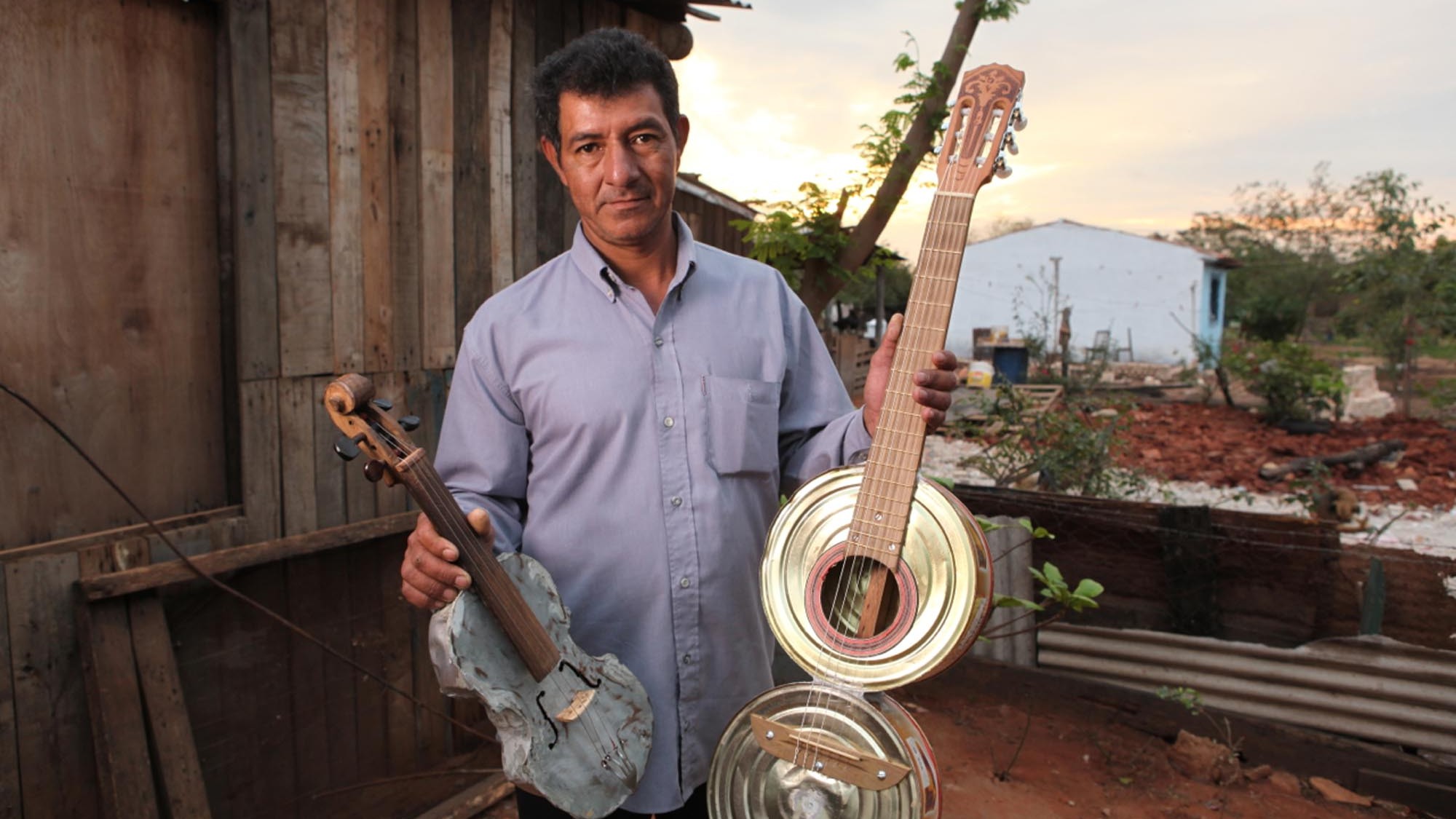The joy of non-fiction stories is that they can be as incredible as ever without giving the viewer skepticism like they would if a screenwriter had conceived it. Landfill Harmonic is an inspiring documentary about impoverished children who live in a garbage-filled outskirt in the capital city of Paraguay and their inventive way of getting past their circumstances.
A local trash collector named Colá starts making musical instruments out of the trash he finds. An environmentalist is sent to this town to help alleviate the unfixable trash problem but instead discovers a musical solution. Together these two community leaders take a group of schoolchildren and form “The Recycled Orchestra.” By making instruments out of trash, it gives them an opportunity to play music on instruments they could never otherwise afford, like violins and cellos. The result is a story that caught on like wildfire and allowed these children to become more well-known than they could’ve ever dreamed.
This is a story worth sharing in large part because of the intersection of many global problems that it connects: musical culture, environmentalism and waste, education to the impoverished, and more. The hook of seeing children learn music on instruments made of recycled garbage is an entrance into a community we otherwise would never imagine here in the US. It is stories like these that help bridge the world and build a collective understanding of communities across continents and nations.
There is nothing but exuberant praise to be given when discussing this film’s story. Unfortunately, the documentary upon which it is built does not always allow this premise to shine as brightly as it potentially could. The major issue is that there is a clear rift between the two central stories: the music and the trash-ridden community. Playing these instruments has given these musicians the opportunity to travel worldwide and share the power of their story. However, it’s never seen as a way to empower them upon returning home. All I saw was a major disconnect between getting to travel and play for other nations, and then returning home to the same situation as before. What would have been more impactful is showing a connection between their current situation and the long-term change for good that their music is creating. Otherwise, I fear the recycled orchestra comes across as more of a sideshow to the more affluent parts of the world. When the film builds to big moments, for example when the students are playing concerts, it doesn’t capture the power that the music is having on these kids as much as I imagine it would. The approach feels a little more like an outside perspective, whereas I would’ve preferred a clear direction as to where the narrative is going and how the characters are feeling toward the extraordinary situations they reach.
That being said, one message is clear: you can’t expect the people at the receiving end of a trash-producing world to be the ones to fix the problem. We all need to reduce waste drastically and the images in the film confirm this. How to do this on an impactful scale is a question I’d still like to see an answer to. I find that this film is a great introduction to the story but not as in-depth of an experience as many contemporary documentaries. At least there is no doubt that these young musicians have found hope and beauty in a place most of the world would easily dismiss.
“Landfill Harmonic” is not rated. 84 minutes. Opening at the Laemmle in Santa Monica on Friday, September 23rd.
H. Nelson Tracey
Nelson is a film director and editor from Denver based in Los Angeles. In addition to writing for Cinemacy, he has worked on multiple high profile documentaries and curates the YouTube channel "Hint of Film." You can check out more of his work at his website, hnelsontracey.com


